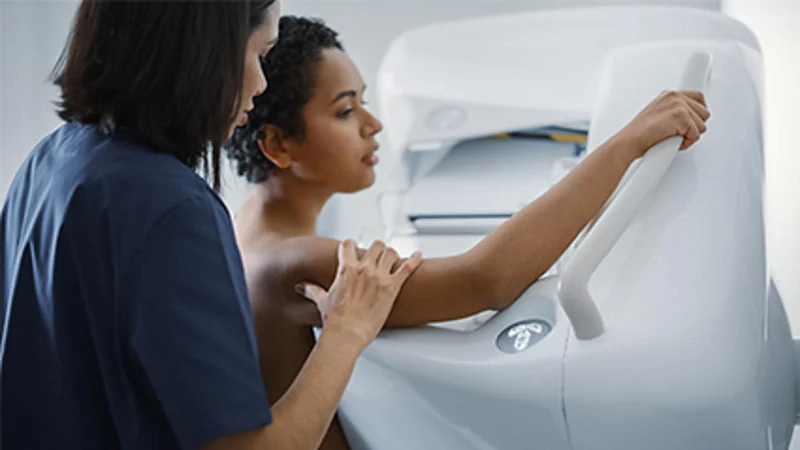Due to a recent change of our website, the process for submitting refill requests online has now changed.
Please click on “Sign Up Today!†to create a new account, and be sure to download our NEW Mobile app!
Thank you for your patience during this transition
Manténgase sano!

- Cara Murez
- Posted May 1, 2023
Scientists Spot New Potential Risk Factor for Breast Cancer
A new study has uncovered a possible risk factor for breast cancer that could help doctors more accurately weigh a woman's chances of developing the disease.
While it's known that women with dense breast tissue have a greater risk for developing breast cancer and that breast density declines with age, researchers have now found evidence of cancer risk specific to breast density declining unevenly.
Among the findings were that when one breast had a slower decline in density, cancer was more likely to be found in that breast, the study found.
"I hope they can get this into clinical use as soon as possible -- it will make a huge difference,"study author Shu Jiang, an associate professor of public health sciences at Washington University in St. Louis, told the New York Times. "There could be different risk-stratification guidelines set up to monitor those who are having much slower decline in tissue density, versus those who are not."
The study included about 10,000 women over a 10-year-period. The women did not have cancer when the study began, but 289 women developed it by the end of the study. Researchers compared them to 658 similar women who did not develop breast cancer.
The women who developed cancer during the study tended to have higher breast density at the study's start.
But beyond that, researchers found that breasts that later developed cancer had significantly slower decline in density compared to the woman's other breast.
The findings were published April 27 in the journal JAMA Oncology.
This discovery could be a new detection tool, making it possible to assess breast density at different times after a woman begins having mammograms.
"So, this information is actually already available, but it's not being utilized,"Jiang explained. A woman's risk of developing breast cancer could "be updated every time she gets a new mammogram,"Jiang noted.
Karen Knudsen, chief executive of the American Cancer Society, said the study was "exciting."
"This is the first study I've seen that looks specifically across time at changes from breast to breast, instead of averaging the two breasts, where you might miss these changes,"Knudsen told the Times.
"We need to know how to follow women with dense breasts, instead of just alerting them,"Knudsen said.
More information
The American Cancer Society has more on breast density.
SOURCE: New York Times
